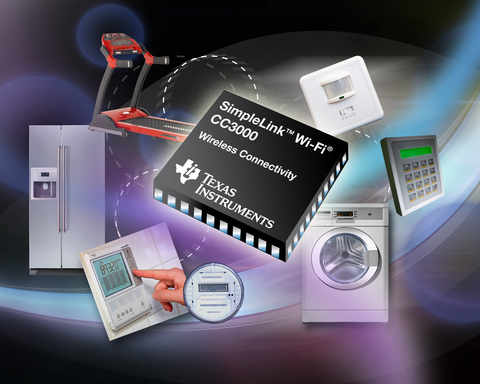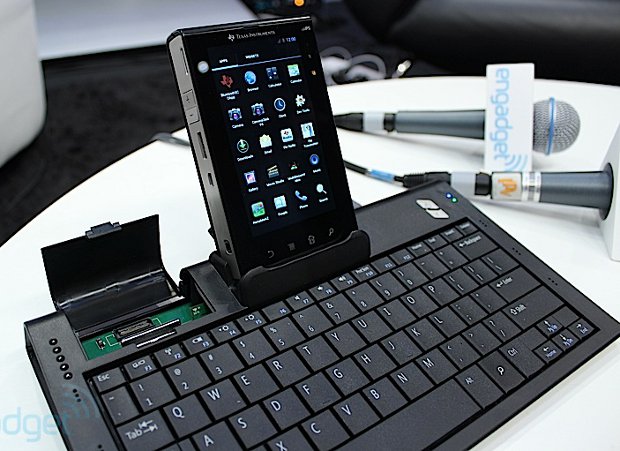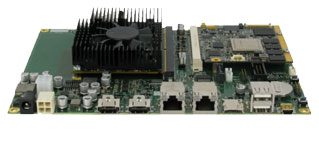Yesterday, Texas Instruments unveiled the SimpleLink product family, a portfolio of wireless connectivity technologies for low-power, low-cost embedded applications, which includes self-contained wireless processors supporting Wi-Fi, ZigBee, 6LoWPAN, and ANT. The most noticeable product is the SimpleLink Wi-Fi CC3000, a self-contained 802.11 (WiFi) network processor, that can be added to any embedded application and provide WiFi connectivity to the Internet of Things. With this solution, you can add WiFi to any device, even those powered by MCUs without operating systems such as dishwashers, toasters, refrigerators, thermostats, and factory automation equipment. I wish they’ll make new version of the MSP430 Chronos Wireless Watch with WiFi connectivity, this would remove the need for the RF Dongle. This solution features TCP, UDP and IP software stacks in the chip, it consumes 0.5% of the resources as compared to traditional Wi-Fi and only requires 6KB Flash and 3KB RAM. The company claims it can be […]
Texas Instruments OMAP 5 Reference Design
Texas Instruments announced it was developing the OMAP 5, the first Cortex A15 processor, in February 2012. This year at CES 2012, Texas Instruments unveiled OMAP 5-based reference design / development platform running Android 4.0.1 to Engadget. Remi El-Ouazzane, VP of OMAP at Texas Instruments, explains: “This is the greatest platform on Earth right now… way ahead of Apple, and it’s the first Cortex-A15 (which runs 2x faster than the Cortex-A9) product on the market. When running two Cortex-A15 chips at 800MHz, it’s more or less the same performance as running two Cortex-A9s at 1.5GHz. You’ll see [commercially available products] ramping up with this stuff in late 2012 or early 2013. We are also running Windows 8 on the latest OMAP; it runs perfectly well, and we’ve been working very closely with Microsoft. We’re working on multiple form factors — tablets, thin-and-lights — and we think ARM is going to […]
MIPS Releases Android NDK 7m
MIPS has just announced the release of the Android Native Development Kit version 7. It has the same APIs as the Android NDK revision 7 released in November 2011 (for Android 4.0), but adds support for MIPS architecture and the MIPS ABI . The NDK is available for Windows, Linux and MacOS. The NDK allows developers to use C/C++ code either to reuse existing C/C++ code or to improve the performance over code developed with Java. Note that MIPS states that “using native code does not result in an automatic performance increase, but always increases application complexity. If you have not run into any limitations using the Android framework APIs, you probably do not need the NDK.” The NDK can be downloaded for: Windows Linux Mac You’ll also have to download the Android MIPS SDK, if you want to use the NDK. Strangely, the Mac SDK is not available for […]
Nvidia Announces CARMA Tegra 3 CUDA Development Kit
Nvidia has just unveiled its Tegra 3 development kit, the Nvidia CARMA. The development kit codename has been crowdsourced as Nvidia asked its followers to propose a name and vote for the best name. This development kit particularly targets CUDA, Nvidia parallel computing platform and programming model that enables dramatic increases in computing performance by harnessing the power of the graphics processing unit (GPU). The CARMA hardware has been designed by Seco and features an NVIDIA Tegra 3 ARM Cortex A9 Quad-Core CPU and NVIDIA CUDA GPU QuatroTM. Here are the technical specs for the development kit: CPU NVIDIA Tegra 3 Quad-Core ARM A9 GPU NVIDIA QuadroTM 1000M with 96 CUDA Cores Memory • CPU Memory: 2 GB • GPU Memory: 2 GB Peak Performance 270 Single Precision GFlops CPU – GPU Interface PCIe x4 Gen1 link Network 1x Gigabit Ethernet Storage 1x SATA Connector USB 3x USB 2.0 Display […]
Select an ARM MCU during Development with Atollic TrueSTUDIO for ARM
Atollic has released the latest version of TrueSTUDIO development tool for ARM, a C/C++ development tool for embedded developer that looks similar to Eclipse. It supports micro-controllers from a number of semiconductor manufacturers, making it possible to switch MCU supplier during the design process. This release of TrueSTUDIO supports several ARM MCU cores such as ARM7, ARM9, Cortex-M0, Cortex-M1, Cortex-M3 and Cortex-M4 processors. It also includes device-specific support for an extensive list of ARM processor-based micro-controller families, including: Atmel AT91SAM, EnergyMicro EFM32, Freescale Kinetis, Fujitsu FM3, STMicroelectronics STM32, Texas Instruments Stellaris and Toshiba TX. As well as an optimizing C/C++ compiler and a multiprocessor-aware debugger, the tool also has serial wire viewer tracing, graphical UML diagram editors for model-based design and architecture, performs code-quality analysis via TrueINSPECTOR and TrueANALYSER and features a test-automation toolbox (TureVERIFIER). There is also an ECLIPSE-based IDE with editor, x86 C/C++ build and debug tools for development of […]
Phytec Texas Instruments OMAP4430 Computer Module
Phytec announced the first system on module based on Texas Instruments OMAP4430. The phyCORE-OMAP4430 features up to 1GB LPDDR2 DRAM, 1GB NAND Flash, one USB Host, one USB OTG port, Ethernet, I2C Interface, DSI and HDMI video output and consumes a maximum of 3 Watts only. Here are the full specifications of the phyCORE-OMAP4430 computer module: Texas Instruments OMAP4430 @ 1GHz PowerVR SGX540 GPU 56 KB On-chip SRAM and 512 MB (default) or 1 GB LPDDR2 DRAM 128, 256, 512 MB (default) or 1 GB NAND Flash 4 (default) or 32 KB EEPROM 2 SD/SDIO/MMC Expansion slot 4 UARTs, 1 RS232, 3 I2C, 1 I2S and 2 SPI/SSP serial connections. 1 USB Host and 1 USB OTG ports. 10/100 MBit Ethernet 2 x DSI, 1 x HDMI video output ports up to 1080p encode/decode and Touch screen support DVI/HDMI, PWM, Camera, Keypad, JTAG and RTC Dimensions: 41 x 51 mm […]







